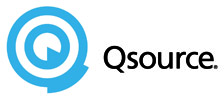Cardiac Quality Measures in MIPS
If you’re a healthcare practitioner, a reminder to help your patients quit smoking, use aspirin, and/or control their blood pressure may seem elementary. Yet, quality measures are not reflecting consistent care provision in these areas.
Is it a documentation issue? Perhaps. Or could care in these areas be so routine, that it gets quickly addressed and conversations move on to other health conditions? Either way, Qsource can help assure your patients are receiving the quality of care they need, whether to help with tobacco cessation, appropriate use of aspirin therapy, or control of hypertension.
In addition to providing the best care possible for your patient population, addressing your performance on these quality measures helps you succeed in the Medicare Quality Payment Program (QPP). High performance on quality measures or making improvements from previously reported scores earns additional points in the QPP which can help you avoid reimbursement reductions or even achieve additional reimbursement.
The following measures are ones your practice can report on for the Merit-based Incentive Payment System (MIPS) – routine, yes; reported, not always.
| MIPS Measure ID | Measure Description |
| MIPS 204 | Ischemic Vascular Disease (IVD): Use of Aspirin or other Antithrombotic |
| MIPS 226 | Preventive Care and Screening: Tobacco Use: Screening and Cessation Intervention |
| MIPS 236 | Controlling High Blood Pressure |
In addition, work on these quality measures may help you improve your MIPS score in the Improvement Activities category. Some potential activities are listed below, but others may apply as well.
| MIPS Improvement Activity ID | Activity Description |
| IA_BMH_2 | Tobacco Use |
| IA_PSPA_16 | Use of decision support and standardized treatment protocols |
These can be fairly simple measures for your practice to report through your certified electronic health record (EHR). We can help you:2018 Resources-Centers for Medicare & Medicaid Services
- Improve the use of your EHR for effective and timely data capture
- Standardize blood pressure and smoking related data elements and electronic reporting
- Promote smoking screening and cessation counseling
- Leverage EHR functionality including clinical decision support, registry functions and beneficiary reminders/alerts. This may consist of capturing demographic data, including race, ethnicity and/or gender, preventive reminders, vital signs and beneficiary secure messaging.
Helpful Resources
For further information, click here.
Centers for Disease Control and Prevention | Tobacco
Center for Disease Control and Prevention | Heart Disease Educational Materials
Mark Your Calendars
 Skip to main content
Skip to main content


